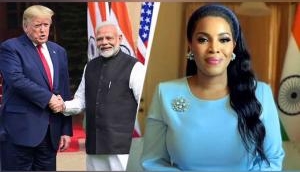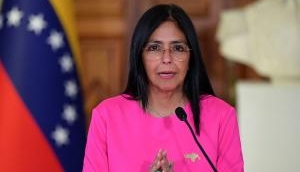How Yemenis are victims of a forgotten war
_119255_730x419-m.jpg)
It is a sad fact that the conflict in Yemen has killed an estimated 28,033 people since January 2017 and pushed 8.4 million to the brink of famine. Some 50,000 Yemeni children are estimated to have died last year from hunger and preventable disease as a result of what United Nations aid agencies describe as “the world’s worst humanitarian crisis.”
However, the irony of what is happening in Yemen is that the civil conflict in this country is widely a proxy war between rivals Saudi Arabia and Iran. Saudi Arabia established a United States-backed coalition of ten nations in March 2015 and launched an aerial bombing campaign in Yemen to push back the Houthis, an Iran-allied rebel group, who seized control of the capital in September 2014.
Since 2015, the United Arab Emirates has been responsible for much of the ground war, particularly in the south and west of the country. More than 22 million Yemenis, three-quarters of the population, are already in need of humanitarian assistance, compounded by restrictions on imports imposed by the Saudi-UAE coalition and a complete blockade on humanitarian aid in response to the Houthis firing ballistic missiles into Saudi Arabia.
Saudis have continuously blamed the Islamic Republic of Iran for the Houthis’ missile attacks. The proxy conflict between Saudi Arabia and Iran has been going on since 2011, following the 'Yemeni Revolution', which prompted regime change. In 2011, the Saudi and the Western world back Yemeni President Abdrabbuh Mansour Hadi became head of state after an uprising against former President Ali Abdullah Saleh in 2011.
Three years later, the Houthis and the Iranians helped Saleh to take control of the Yemeni capital Sana'a and government ministries, pushing the Hadi government into exile. But at the end of 2017, Saleh switched sides again, declaring loyalty to the coalition and sparking a battle with the Houthis that ended in his death at their hands. With the death of Saleh, the Yemen war became clearly and profoundly a proxy war between Saudi Arabia and Iran.
On 19 June, the Saudi led coalition forces announced that they had consolidated their control over Hodeidah airport after a week of fierce fighting with Houthi rebels as part of Operation Golden Victory. Whatever the outcome, the struggle for the city is likely to mark a shift in the essence of the conflict.
Though the loss of Hodeidah will not lead to a Houthi surrender, it will certainly leave the Houthis in a weakened position militarily, and the coalition- led forces will have the upper hand in the future negotiations. But the battle for Hodeidah is taking place at a significant cost, while deepening the political stalemate in Yemen and leaving Yemenites with more humanitarian problems.
Assuredly, President Donald Trump’s decision to pull out of the international nuclear accord with Iran in late May exacerbated the conflict in Yemen. Let us not forget that, Yemen’s internationally-recognised government, which has been forced into exile by Houthi advances, praised Trump’s decision to exit the Joint Comprehensive Plan of Action or JCPOA.
In the eyes of Saudi Arabia and the Gulf Emirates, Iran has been spreading its influence in Yemen since the presidency of Barack Obama. The head of the IRGC's Quds Force, Gen. Qasem Soleimani, ordered a step-up in aid to the Houthis, including more advisers and experts on the scene and more ballistic missile technology.
According to a report by al-Monitor, the IRGC has also suffered some casualties in Yemen. At least 23 Iranian soldiers have been killed or captured and another 21 Hezbollah fighters have been lost. Yemen is a crucial battlefield to breakdown the Saudi foreign policy in the region. However, the Saudis do not want to get into a direct war with Iran.
They know well that though supported by the US, getting into a war with Iran might be easy, it will anything but easy to handle it. United States has a security commitment to Saudi Arabia, but Washington can tolerate a proxy war in Yemen between the Saudis and the Iranians as long as it falls below the threshold of a direct conventional warfare.
The Americans and their allies know well that Iran has a strategic vision for the Middle East, which is to hold Shiite dominance over the Persian Gulf, keeping a strong foothold in Yemen via the Houthis and, above all, competing with the Saudi Wahhabi Islam. Most of the analysts of Middle East politics stress that Iran’s real power in the region lies in its capacity to exploit Arab Shias in Syria, Iraq and Lebanon, including the Houthis in Yemen. Contacts between Houthis and Iran are of far lesse importance than Iran’s relation with the Hezbollah in Lebanon. On the other hand, Riyadh accuses Iran of creating a Shiite crescent and interfering in its immediate neighborhood.
One way or another, the effects of the proxy war between the Saudis and the Iranians has been absolutely devastating for Yemen and its innocent civilians. Placed within this context, the war in Yemen has become a conflict that, because of its complexity, we have chosen to forget, and which it is important that we remember.






![BJP's Kapil Mishra recreates Shankar Mahadevan’s ‘Breathless’ song to highlight Delhi pollution [WATCH] BJP's Kapil Mishra recreates Shankar Mahadevan’s ‘Breathless’ song to highlight Delhi pollution [WATCH]](https://images.catchnews.com/upload/2022/11/03/kapil-mishra_240884_300x172.png)

![Anupam Kher shares pictures of his toned body on 67th birthday [MUST SEE] Anupam Kher shares pictures of his toned body on 67th birthday [MUST SEE]](https://images.catchnews.com/upload/2022/03/07/Anupam_kher_231145_300x172.jpg)






